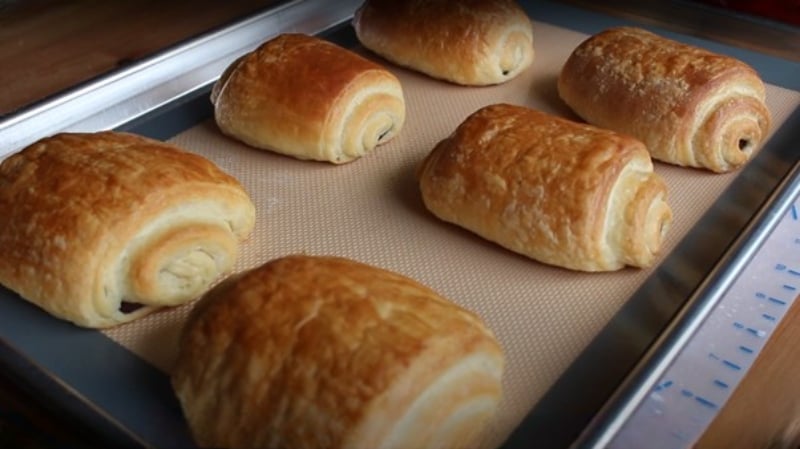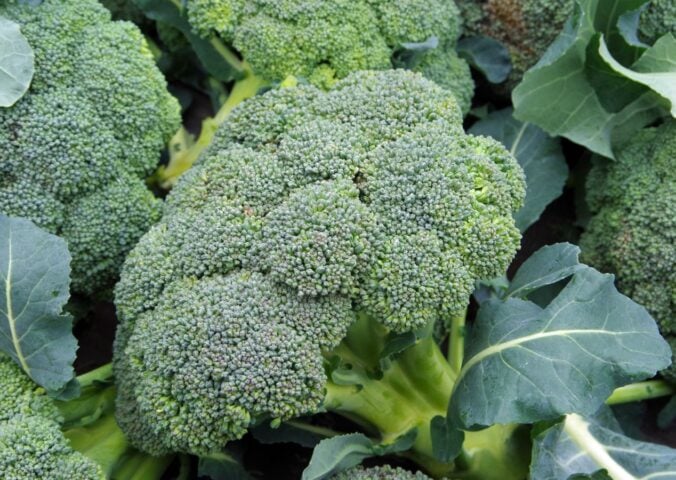Most people wouldn’t believe a flaky, golden croissant could be made without butter. But Sarah Sullivan knows just how easy it is to recreate the magic – no dairy required. The creator behind Sarah’s Vegan Kitchen, known for approachable plant-based recipes, shared an in-depth guide to making vegan croissants and pain au chocolat that are as close to the French originals as you can get.
Read more: Vegan Cinnamon Slice
With years of experience veganizing comfort food classics, Sullivan says this recipe stands out because it delivers on texture, taste, and that all-important laminated finish. Her video takes viewers step-by-step through the entire process, from choosing the right flour and butter to folding the dough just like a French baker.
Choosing the right ingredients
Sullivan begins by stressing the importance of using bread flour, explaining that its higher protein content helps develop the dough’s elasticity and structure, key for achieving the perfect croissant texture. While all-purpose flour can be used in a pinch, she warns that you’ll likely need to tweak the ratio to get similar results.
Butter is another key decision. Sullivan tests two brands: Earth Balance and Melt buttery sticks. While Earth Balance is widely available, she finds it imparts a “vegetable shortening flavor.” Melt, on the other hand, delivers a flavor and texture that is absolutely authentic.
In a comment update, Sullivan shares a new discovery: “Finally got my hands on Miyoko’s vegan butter (thanks to everyone who told me it’s available at Trader Joe’s!) and I think it would work phenomenally in this recipe! I haven’t tested it directly with croissants, but a batch of chocolate chip cookies I just made with it came out beautifully. By far my new favorite as it is palm oil-free!”
Building the dough
To start the dough, Sullivan proofs two packets of active dry yeast in warm water – she avoids plant milks in this step because she finds they alter the dough texture.
The dough is made with bread flour, sugar, salt, and softened vegan butter. After mixing and kneading with a stand mixer, she performs the “window pane test” to check gluten development: “You should be able to stretch a small piece of dough in your hands till you can see light through it.”
Once ready, the dough is left to rise for one to two hours, depending on room temperature. “You want the dough somewhere between double and triple in size,” she explains, then shaped into a rectangle and chilled overnight in the fridge to develop flavor and make it easier to handle during laminating.
She also preps a butter block in advance using the softened vegan butter, forming it into a neat square. “You just stick your butter into a bag, squeeze out the air and roll it into a square,” she says, though parchment paper works too. This, too, goes into the fridge overnight.
Laminating the dough
The next day, it’s time to create the buttery layers. Take the dough and butter slab out of the fridge and let them sit for about 10 minutes to make them easier to work with. Once they are ready, she encloses the butter in the rolled-out dough and performs a series of folds to create the layers. First, a “double turn” folds the dough like a book. Then another round of folding, this time into thirds, multiplies the layers. “You’ve multiplied your layers of butter from 4 to 12,” she explains.
It’s important to work quickly so the butter doesn’t melt. If needed, Sullivan recommends resting the dough in the fridge for 15 to 20 minutes between steps.
Shaping the croissants

After resting, to shape the croissants, Sullivan rolls the dough out to about 18 by nine inches and cuts it into triangles. She adds a small slit at the base of each triangle before rolling them up to give them length and lift. For pain au chocolat, she uses rectangles and rolls them around chopped chocolate, making sure the seam is on the bottom.
She recommends placing the shaped pastries on a lined baking sheet and allowing them to rise for one to two hours, again depending on room temperature.
Just before baking, Sullivan optionally brushes the croissants with a mix of agave or maple syrup and plant milk for a glossy finish. They’re baked first at 400°F for 10 minutes, then at 350°F for another 12–15 minutes, depending on size.
The result? A golden, flaky, buttery pastry that’s completely plant-based but feels anything but.
Whether you’re making them for brunch, a special occasion, or just to prove vegan croissants are possible, Sullivan’s tutorial shows exactly how to do it with a texture and flavor that even non-vegans will love.
For more vegan recipes, visit Sarah Sullivan’s YouTube channel.
Read more: Vegan in Paris: Is It Really That Hard? A Food Vlog Breakdown






